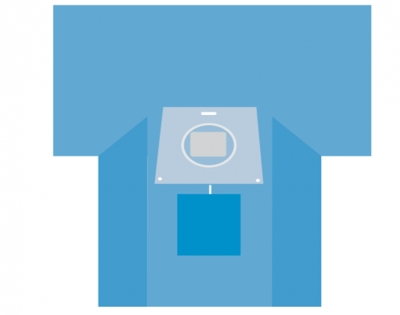When many patients enter the operating room, they will find that the work clothes worn by the medical staff in the operating room are not white coats, but green or blue surgical gowns and hand-brushing clothes. What is the reason? This article will introduce popular science from the development history, basic requirements and dressing principles of surgical clothing.In the industry, universal surgical packs Has been a leader in the industry, but later came from behind but never arrogant, low-key to adhere to quality. https://www.customsurgicaldrapes.com/
First, the development history of surgical gowns
Before the 19th century, most western doctors wore black cloaks, which was related to the Black Death (that is, plague) that haunted Europe for hundreds of years. Black is a symbol of depression and death. Seeing a doctor in black clothes basically declares the end of life. In the mid-19th century, surgeons in London still wore ordinary coats, but at that time, the buttons on the sleeves of the coats were redesigned so that they could perform operations without taking off their coats. In the middle and late 19th century, with the invention of general anesthesia, the types of surgical operations increased day by day, but most surgeons wore their own clothes to perform operations. In the early 20th century, the sign to measure a surgeon’s success turned out to be whether there was enough blood and liquid on his clothes. In other words, wet clothes often mean a major operation. The method of preventing bacteria advocated by joseph lister and the Spanish flu epidemic in 1918 made doctors pay attention to protection, wearing masks and hats to protect themselves from being infected by patients. With the passage of time, the standard dress of medical staff after entering the operating room is gradually formed.
Second, the basic requirements of surgical clothing
1. The fabric used in surgical clothes has the characteristics of tight weaving, less floc dropping and strong wear resistance. Surgical gowns can also be made of antibacterial fabrics. The color of surgical clothes is usually blue or green, because the surgeon is nervous during the operation and pays close attention to the red human organs. If they suddenly look at their colleagues’ white clothes or white walls, they will see blue-green “things”, which will affect the surgeon’s vision and judgment and be very dangerous to patients. Blue and green are complementary colors of human viscera and blood, which can improve the sensitivity of medical staff to red.
2. The fabric should meet the requirements of comfort, breathability, waterproofness, moderate thickness, no fiber falling off easily and no static electricity.
3. Wear protective slippers in the operating room to prevent the feet from being polluted by the patient’s body fluids and blood, or from being damaged by sharp instruments. Slippers should have the characteristics of low heel, non-slip, easy cleaning and disinfection. Protective slippers should be “one person, one use and one disinfection”.
4. After daily use or pollution, the surgical clothes are recycled and sent to a hospital-certified washing institution for washing.
5. After washing, surgical clothes should be stored and transported in closed vehicles or containers that are cleaned and disinfected regularly.
6. Aseptic surgical gown should be intact without damage and complete lacing. During operation, the back should be completely covered and the lacing should be fastened.
Three, surgical clothing dress requirements
1. The staff enter the operating room through a special channel, and change the sterilized surgical clothes and slippers in the designated area. The hat should completely cover the hair, and the mask should cover the nose, mouth and face. The surgical cap should be replaced every day, and immediately when it is contaminated.
2. Keep the surgical clothes clean and dry. Once the scrubs and surgical masks are contaminated by pollutants or suspected pollution, they must be replaced immediately. If the staff’s body is polluted by blood and body fluids in a wide range, they should take a bath or change their hand clothes after taking a bath.
3. Brush your hand and coat into your pants.
4. Wear clothes inside, such as collars, sleeves, trouser legs, etc., that can’t be exposed outside the hand-brushing clothes or visiting clothes.
5. Don’t wear jewelry (rings, watches, bracelets, earrings, beaded necklaces) that can’t be covered by hand-brushing clothes, and don’t make up or manicure.
6. Non-surgical personnel (including inspectors, family members and medical engineers) entering the clean area of the operating room can wear isolation gown, completely cover their personal clothes, change slippers in the operating room and wear masks and hats in a standardized manner.
7. If blood, body fluids or other infectious substances may splash, atomize and spurt during the operation, you should wear protective articles correctly, such as protective glasses and protective masks.
8. When the staff goes out of the operating room (such as sending patients back to the ward, etc.), they should wear clothes and shoes. Keep clothes clean, change, clean and disinfect them regularly.
IV. Conclusion
I hope readers can understand the meaning behind the surgical clothes of operating room staff through this article. In front of patients waiting for medical staff to be cured, facing their anxiety, surgical clothes not only reflect the professional image of medical staff, but also protect medical staff, avoid occupational exposure, reduce surgical site infection and ensure patients’ surgical safety. I hope that this unique surgical costume can make patients feel the love, patience and empathy of medical staff, and also hope that patients can actively cooperate with medical staff in diagnosis and treatment, successfully pass the surgical period and return to normal daily life.